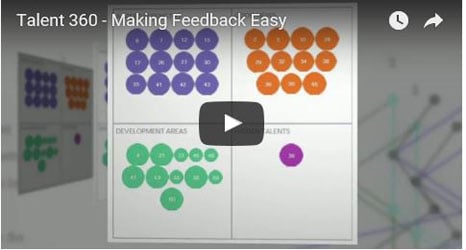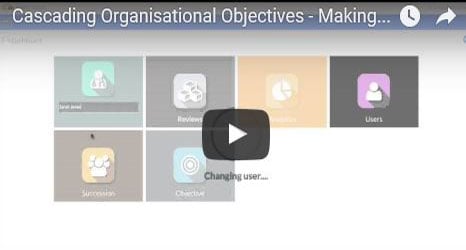
How do I develop the skills of the future?
Reskilling for the Future Workforce
There is much talk about the 'future skills' needed of the workforce – and a skills shortage.
The European Commission Employment and Social Developments in Europe (ESDE) Report 2023 highlights the current labour shortages in various sectors and occupations and across all skills levels. It states that these skills shortages are only set to increase. This is not a new challenge.
The World Economic Forum report that 44% of workers’ skills will be disrupted by 2027. Back in 2020, 94% business leaders expect employees to pick up new skills on the job (a sharp uptick from 65% in 2018). It is clear that today’s (and the future’s) workforce require the ability to reskill and learn new competencies and to be self-sufficient in this.
Gartner reported that over two-thirds of HR leaders in 2021 said that their most pressing priority was the building of critical skills and competencies. They showed that one-third of the skills listed in a typical job post in 2017 are now no longer mentioned in ads and job posts in 2020 required 10% more skills than in previous years.
However, while they understood the imperative of making this happen, they admitted gaps in current skills management practice.
- 36% cannot measure the skills gap between the current skills profile and what it needs to look like.
- 33% do not integrate learning with current employee workflows.
- 31% cannot create skill development activities fast enough to cope with evolving needs.
In 2022, the CIPD’s Labour Market Outlook Report reported that almost half of employers were reporting ‘hard-to-fill’ vacancies. As a result, 44% of those employers are turning to upskilling programmes in order to solve this.
Reskilling retains talent and saves resource. Reskilling current talent saves organisations £50k compared to hiring in new. However, it also builds the resilience of the organisation, supporting any future-proofing action undertaken.
The challenge is for HR leaders to not only understand current workforce skillsets and what is needed, but also to unleash those skills already held (but not yet known about) across the organisation.
Establish the Baseline – and Look to the Future
If roles are changing, new skills will be needed and competency frameworks will require an update.
Designing your upskilling and reskilling competency roadmap requires you to know where you are now – and where you are heading. That is, creating a definition of the future competencies that your specific organisation needs.
You might already know these or need the support of a partner to work this through with you. Either way, the start point is a snapshot of current individual competencies.
360-degree feedback measures the baseline of current competencies.
For decades, 360-degree feedback has helped managers, individual team members and L&D leaders understand the extent to which the competencies required in a role are held by the individual. The results inform development conversations, action plans and L&D initiatives.
Typically, the competencies being rated in a 360 are those of the current role or an aspirational leadership role or a role into which the individual wants to be promoted. We are seeing an increasing use of 360 as part of promotional boards and assessment centres.
However, with a configurable 360 system – and not all 360s will do this – you have the choice of including an alternative questionnaire with a more future-focused set of competencies. These are ideal if you or the individual wants to understand how they currently fare alongside such requirements.
See how this works (3 minutes watch)
If you’re already using 360-degree feedback, you may want to check how it stacks up against our Talent 360.
If you are not yet using a 360 questionnaire to help you spot the gaps for development, then perhaps it’s something to explore with us.
Help Individuals to Plan their Path and Understand the Demands of Future Roles
The straight-upwards climb of the career ladder is a thing of the past. Careers now resemble a climbing wall, with sideways moves being as important for overall progress.
The challenge for employees is understanding where their current role can take them. How can their current competencies be deployed in other roles? Which of these may need to be further developed to move into a role of interest?
Career pathing tools, such as Talent Navigator, can help in this.
You populate the tool with details of the roles included currently within your job architecture and any new roles for which you have a clear job description and competency outline (even if no one is yet in post).
Your employee can then log into Talent Navigator, including their 360 review feedback from Talent 360, to understand their current competency profile and level. They can then search for roles either in which they are interested or which match (or could match with some development) their skill areas.
This means individuals can plan their future career with you. They can understand which areas they need to develop or consolidate skills in order to move into future roles.
See how this works (3 minutes watch).
If you’re not yet offering your employees a career pathing tool, get in touch as we can show you what Talent Navigator can do.
Make Sure Employees Know Where the Business is Heading – to Plan their
Own Development
Business strategies and plans need to be agile and adaptable. Similarly, departments, teams and individuals need to keep abreast of changes to plans and goals and make sure their actions stay true to overarching objectives.
How can managers help individuals keep on track and see the direct link between their role and the goals of the team and the wider firm?
One way is to translate organisational goals into individual objectives, cascading them down and across the company, with individual objectives rolling up into team aims and these team aims all connecting to deliver department and organisational plans.
So, as the strategic goals change, so do those of the individual.
Individuals can track this through an always-available system, such as Talent Performance. Individual users can log in and see how their objectives align with the bigger picture – and view their own progress towards those objectives.
See how this works – 2 minutes watch
Reintroduce the ‘Hiring Approach’ to Understand Skills Workforce-wide
Each of us has a very individual and particular skillset.
And yet, in any current role, we deploy only a small subset of this. Whether we are first jobbers, returners, part-timers or looking forward to retirement, we have access to skills and experience well beyond what we use regularly. Of course, we know this. Although, somehow, we forget this and especially when, as HR leaders, we look at the employees within our own employee pool.
However, it isn’t always like this.
When we hire, we look beyond the 'here and now'. We scan the CV and look out for relevant former employers and make a note of those projects worked on. We’re looking for relevant and transferable skills and experience. Indeed, that all forms part of the decision to hire them.
However, as soon as the onboarding is complete, it seems that much of that information is lost. It isn’t transferred to the talent management system and tends not to be recorded anywhere. It may be stored or scanned and sit somewhere in your ATS but rarely does this information get shared or referred to at a later time.
This is a waste of information – and skills and experience – which could be so valuable when needing to pull together a specific project team for a specific project. Or when you’re looking at succession planning, when track record and skills acquired outside of the organisation may have a part to play in an employee’s readiness or suitability for the next step or opportunity.
Pre-hire skills and experience is worth capturing. So too are the skills and experience gained in-house, beyond that recorded in the performance conversation. Think about the cross-functional project teams, working parties and client projects that your people work on from time-to-time – all the while acquiring skills, experience and knowledge for themselves. Once the group has disbanded, the skills remain.
When a new team needs to be built, do you find yourself searching your memory for names or asking around your internal network for details of those who might contribute and bring a certain uniqueness to the new group?
Traditionally, skills management systems deliver audit capability for the skills frameworks within an organisation.
Such frameworks combine professional qualifications and accreditations, with job- or role-required skills. With this in place, you can then audit and plot the current skills landscape. In essence, they answer the question: what skills do we have within our organisation?
They also help to spot current compliance or essential skills gaps: what skills do our people need to do the job we are asking of them? Is there a certificate or training course that needs to be updated or attended? Where are the obvious skills gaps?
We ask: where is the room for the employee to contribute to the skills conversation in terms of what they have, what they want to develop and how can they best contribute?
And, in a world in which retaining, nurturing and engaging with your talent is crucial, this lack of employee voice must surely be a gaping hole in the current approach?
Imagine projects being curated for the skills management system not by the HR team, but by those who had the specific responsibility for contributing and delivering the projects' results. Imagine the team member being the one to input, flag and tag the skills utilised. Imagine being able to then search that skills database to find the person whose skillset you need right now or those who have worked on a specific project and/or at a specific time.
And extending that, imagine being able to see who has relevant and prior industry experience that you can draw on.
Think differently about Skills Management
Traditionally, skills audits are HR-led exercises. While valuable to audit the entire company, the different functions and each department, they can miss large pockets of skills and experience that are simply not known by the HR team. Advanced analytics mean that you can interrogate the data. Customisable skills profiles enable you to build up the most relevant view of the workforce. You can see ratings and also scores and gaps. However, you’re missing some of the finer, and perhaps softer, detail.
Isn't it now time for individuals to manage their own skills profile held within the organisation?
Handing over the keys to the skills management system to the employee allows them to be in control – and gives them a voice.
Don’t just enable the individual to include their own information about the important projects they’ve been part of, or their achievements or their past employer experiences. Instead, get them to own their skills profile. Link it with your succession planning actions, career conversations and development and coaching plans.
Skills Management – Going Forward
What might you need to support a more employee-centric skills management approach?
- A readily available, single online tool that employees can access and update whenever they wish.
- An easy-to-use system for HR and managers to dip into when needed and interrogate the system’s data.
- The ability to cut and slice the data in various ways, export it into reports and present it for different audiences.
- Configurability – so the system can adapt and flex as skills and priorities change.
- A system embedded and recognised as the ‘go to’ for skills information.
Explore Talent SafeGuard as a new approach to skills management.
Your Turn
A future-focused culture that develops an agile and resilient workforce not only strengthens engagement and demonstrates the organisational commitment to development and mobility, but also positively impacts retention.
Putting in place a fast-to-access digital platform for your employees to request, receive and share feedback is an easy way of collecting, storing and accessing those attributes, skills and experience that others value them for. This can really help to boost recognition.
Get in touch and let’s talk.

